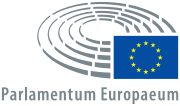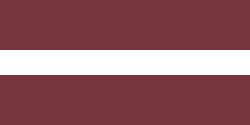Europaparlamentsvalet i Lettland 2014
| Val till Europaparlamentet 2014 | |
| Område Antal mandat Valdagar | 8 24 maj |
| Valmanskår Valdeltagande | 1 472 478 30,24% |
| Valsystem Valmetod Spärr | proportionellt valsystem Sainte-Laguës metod 5 % |
| Andra val Föregående val Nästkommande val | Europaparlamentsvalet 2009 Europaparlamentsvalet 2019 |
Europaparlamentsvalet i Lettland 2014 ägde rum lördagen den 24 maj 2014. Knappt 1,5 miljoner personer var röstberättigade i valet om de 8 mandat som Lettland hade tilldelats. Enligt officiella siffror minskade valdeltagandet kraftigt till 30,24 procent, en minskning med mer än 20 procentenheter jämfört med föregående val 2009.[1] Valets främsta vinnare blev regeringspartiet Enhet med fyra mandat. Nationella alliansen, socialdemokratiska partiet Harmoni, De grönas och böndernas förbund och Lettlands ryska union fick vardera ett mandat.
Se även
Referenser
Noter
| |||||||||||||||||||||||||||||||||||
| EU-portalen – temasidan för Europeiska unionen på svenskspråkiga Wikipedia. |
Media som används på denna webbplats
The Flag of Europe is the flag and emblem of the European Union (EU) and Council of Europe (CoE). It consists of a circle of 12 golden (yellow) stars on a blue background. It was created in 1955 by the CoE and adopted by the EU, then the European Communities, in the 1980s.
The CoE and EU are distinct in membership and nature. The CoE is a 47-member international organisation dealing with human rights and rule of law, while the EU is a quasi-federal union of 27 states focused on economic integration and political cooperation. Today, the flag is mostly associated with the latter.
It was the intention of the CoE that the flag should come to represent Europe as a whole, and since its adoption the membership of the CoE covers nearly the entire continent. This is why the EU adopted the same flag. The flag has been used to represent Europe in sporting events and as a pro-democracy banner outside the Union.European Parliament logo



